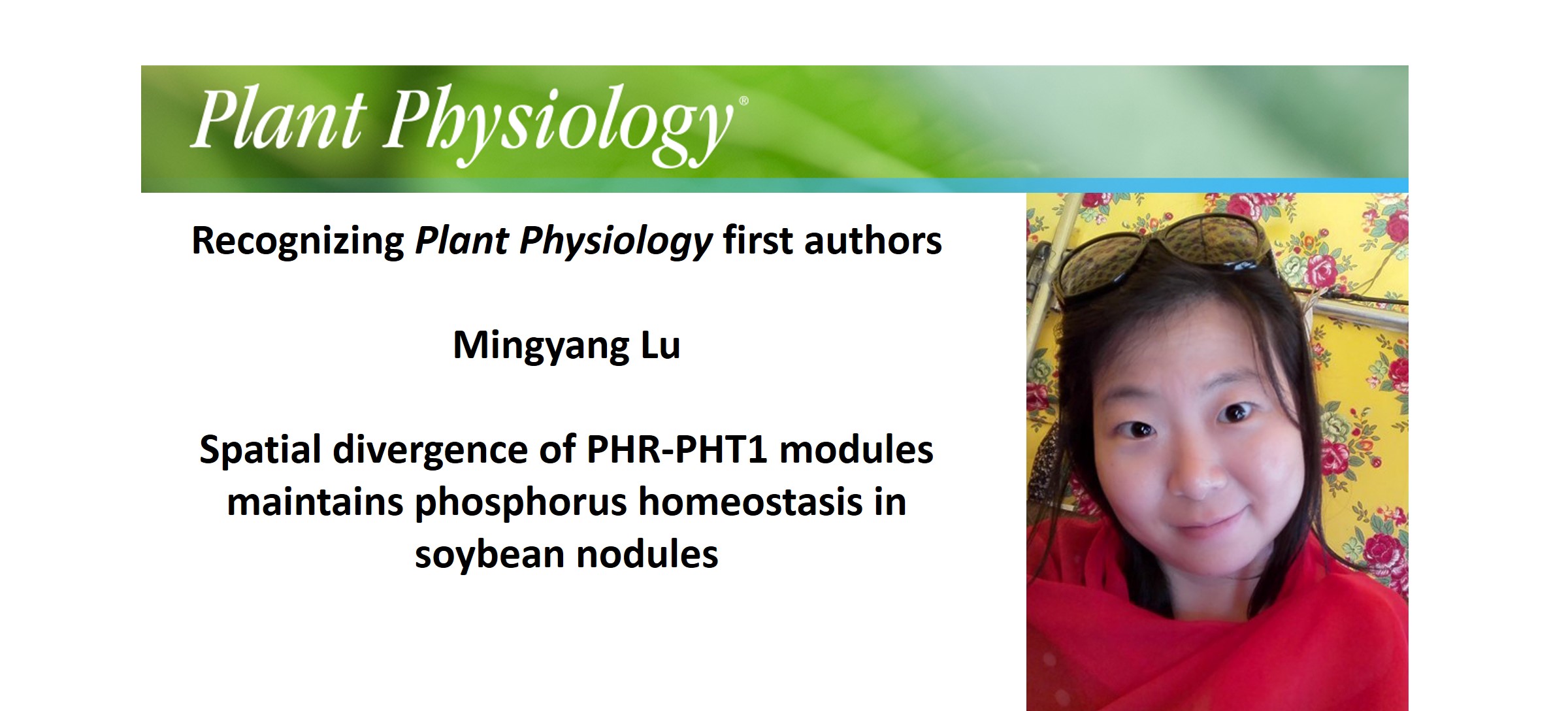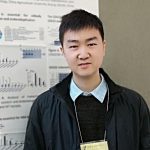Recognizing Plant Physiology authors: Mingyang Lu
 Mingyang Lu, first author of Spatial divergence of PHR-PHT1 modules maintains phosphorus homeostasis in soybean nodules
Mingyang Lu, first author of Spatial divergence of PHR-PHT1 modules maintains phosphorus homeostasis in soybean nodules
Current Position: Currently unemployed
Education: Ph.D. from Chinese Academy of Agricultural Sciences (CAAS, Beijing, China) and China Agricultural University (CAU, Beijing, China). B.S. and M.S. from Henan Agricultural University, Zhengzhou, China
Non-scientific Interests: hiking, photography, and cooking
Brief bio: I was fortunate to join the research group of professor Yongfu Fu of the Chinese Academy of Agricultural Sciences to pursue a Ph.D. in 2013, where I began to carry out research on the stress resistance biology and symbiotic nitrogen fixation biology of soybean (Glycine max). Maintaining phosphorus (Pi) homeostasis in nodules is the key to nodule development and nitrogen fixation. PHOSPHATE-TRANSPORTER 1 (PHT1) and its regulator PHOSPHATE-STARVATION-RESPONSE 1 (PHR1), which comprise the PHR1-PHT1 module, play important roles in maintaining Pi homeostasis in different organs. However, the PHR1-PHT1 module and its functions in nodules remain unknown. In this study, we identified one PHT1 (GmPHT1;11) and four PHR homologs (from GmPHR1 to GmPHR4) in soybean, which displayed specific expression patterns in different tissues in nodules, similar to previously reported GmPHT1;1 and GmPHT1;4. Through the integration of different approaches, GmPHR-GmPHT1 modules were confirmed. High levels of GmPHT1;11 enhanced Pi accumulation in nodules, increased nodule size, and enhanced nitrogenase activity. Combining our results and previous reports, we established multiple GmPHR-GmPHT1 modules acting in the infected or non-infected tissues in nodules. A single GmPHR had more than one GmPHT1 target, and vice versa. Therefore, overlapping and cross-talking modules monitored the wave of available Pi to maintain Pi homeostasis in nodules, which sequentially regulated nodule initiation and development. This study expand our understanding of the mechanism of maintaining Pi homeostasis in soybean plants.
姓名:陆明洋
当前职位:目前待业
学历:中国农业科学院和中国农业大学联合培养,生物化学与分子生物学博士。本科和硕士研究生就读于河南农业大学。
非科学兴趣:徒步,摄影和烹饪
简介:我于2013年有幸加入中国农科院傅永福研究员课题组攻读博士学位,开展大豆的抗逆生物学和共生固氮生物学研究。根瘤是豆科植物生物固氮的主要场所,维持根瘤中的磷的平衡是根瘤正常发育和功能的必要条件。磷转运载体PHT1 (Phosphate Transporter 1) 和磷胁迫响应因子PHR (Phosphate Starvation Response) 是构成植物磷信号通路中的关键调节模块,在维持不同器官的磷稳态中起着重要作用。但是PHR1-PHT1调节模块及其在根瘤中的功能仍不甚明了。在本研究中,我们在大豆中鉴定出了一个PHT1 (GmPHT1;11)和四个PHR同源物(GmPHR1~GmPHR4),它们在根瘤的不同组织中显示出特定的表达模式,先前报道的GmPHT1;1和GmPHT1;4在根瘤中也有类似的组织特异性表达。通过一系列实验分析,证明了在根瘤中,多个GmPHR调节多个GmPHT1成员的转录,即在根瘤中存在GmPHR-GmPHT1调节模块。上调表达GmPHT1;11的大豆植株,其根瘤中磷含量增加,根瘤大小增大,固氮酶活性升高。结合我们的结果和以前的报告,我们建立了大豆根瘤中的GmPHR-GmPHT1调节模型,分别有多个GmPHR-GmPHT1模块分别作用于根瘤固氮区和非固氮区。单个GmPHR可以调节多个GmPHT1,反之亦然。因此,这些相对独立又相互影响的GmPHR-GmPHT1调节模块共同维持根瘤中磷的动态平衡,从而调节根瘤的发生和发育。这项研究拓宽了我们对大豆磷稳态调节机理的理解。



